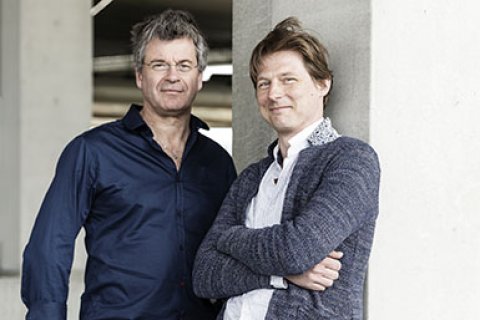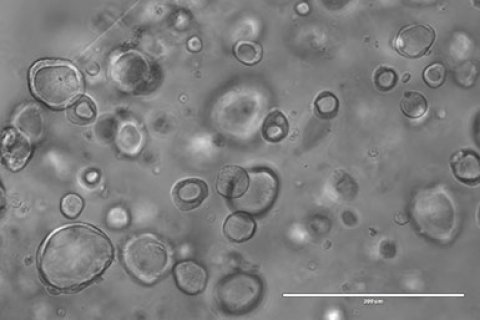Improving the quality of stem cells for new organs
Life Sciences
In need of a new organ, but no available donors? In the future we may be able to replace a worn or damaged organ with new tissue, made from cultured stem cells cultured of our own bodies. One of the problems with culturing and replacing stem cells is the risk of DNA damage or cancer. A challenge for the scientists Boudewijn Burgering and Ruben van Boxtel in Utrecht, who hope to tackle this problem. In 2015 they received a Seed Money Grant from Utrecht University to start this.

When an organ, such as a liver or heart, gives out transplantation is the only option left. Regretfully there is still a shortage of donors. In addition, the body does not always accept the tissue of someone else, which can cause rejection reactions. In regenerative medicine doctors and scientists would therefore prefer to replace damaged tissue with the body's own material.
Mini-organs
At the Hubrecht Institute researchers have been working on culturing stem cells from the body of the patient into mini-organs for some time. With the so-called organoids the molecular geneticist Hans Clevers from Utrecht received world fame. In 2012, together with Japanese colleagues, he was able to cure the intestines of a mouse with the aid of mini-intestines cultured outside the body. In January 2015 he published a revolutionary culture technique for the liver and the pancreas in Cell, based on stem cells. A method which, in principle, can also be extended to other organs.
However, before that time comes, some hurdles still have to be overcome. It appears that changes in the DNA of the cultured cells, so-called mutations, occur much easier outside the body. “Mutations take place naturally”, states Boudewijn Burgering, Professor at the Department of Molecular Cancer Research of the UMC (University Medical Center) Utrecht. “They are responsible for natural selection and thus the evolution of organisms. However, too many mutations increase the risk of tumours. And, outside the body, the organoids are often plagued by this. We want to reduce this risk by preventing mutations.”
Shock for stem cell
According to the two researchers the cause of the mutations lies in the conditions of the cell culture. “Of course these are different in the lab versus in the body”, states Van Boxtel, bio-informatician at the Hubrecht Institute. “Maybe the cells get too much or not enough oxygen, sugars or other substances. So that is what we want to study. We will vary the quantity of one of these substances in experiments and see what the effect is on the cells.”
“This problem is also seen with bone marrow transplantations, the current application of stem cells. A cell in a Petri dish in the lab is exposed to more oxygen than initially in the body of the donor. Once in the body of the receiver the oxygen pressure is lower again. Such a cell gets an enormous shock and then it has yet to divide. So you really are asking a lot of a stem cell.”
Another problem according to the researchers is that the cells divide too quickly in the lab. Sometimes the mechanism for copying the DNA cannot keep up with this division. “The division is not fully completed in that case. If the DNA was not able to double properly during that time, it may cause damage to the DNA. Therefore the division has to be slowed down”, according to Van Boxtel.

One step closer
Burgering and Van Boxtel will start with intestinal stem cells and hope to have the first results in a year. Afterwards it will be checked how the research can be extended to other organs, such as the liver, the lungs and the kidneys. Ultimately, with this knowledge, the scientists hope to improve the quality of the organoids and replacement of organs with new autologous tissue will again be one step closer.
Text: Roy Keeris
Second call Seed Money
In 2015 four research projects were approved in the second call Seed Money Life Sciences. The researchers who received a grant in the second call are:
- Antimicrobial drugs optimization by decoration with non-natural sugar variants - Marc Wösten (Veterinary Medicine) / Roland Pieters (Science)
> Read more in the article Sugars give antibiotics a second chance
- Modified autologous prostasomes as a vaccine for prostate cancer - Willem Stoorvogel (Veterinary Medicine) / Marianne Boes (Medicine)
> Read more in the article In search of a vaccine against prostate cancer
- Human lung organoids: a novel model to understand respiratory syncytial virus Bronchiolotis - Louis Bont (Medicine) / Norman Sachs (Hubrecht Institute)
> Read more in the article Growing ‘mini-lungs’ in the fight against child mortality
- Metabolic Requirements for genome integrity in adult stem cells - Boudewijn Burgering (Medicine) / Ruben van Boxtel (Hubrecht Institute)
> Read more in the article Improving the quality of stem cells for new organs

